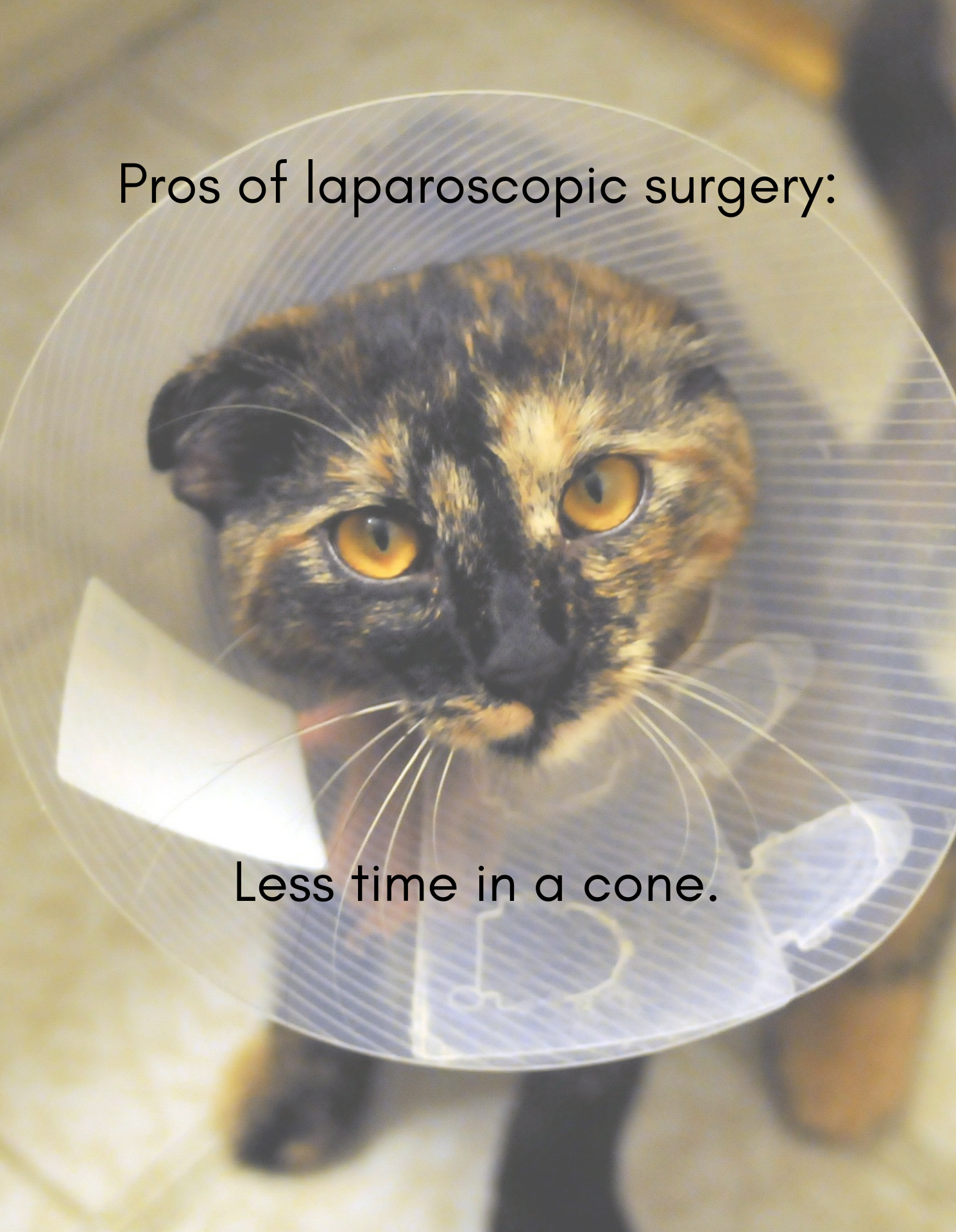Minimally invasive procedures, from colonoscopies to hernia repairs, are performed on humans every single day. What you might not know is that many of the same procedures are also available for cats and dogs.
Laparoscopic surgery, also known as keyhole surgery, gives veterinarians the ability to explore the abdominal cavity using a miniature camera instead performing a traditional open procedure. Once the camera is inserted through a small incision, the surgeon can use it to view individual organs and guide surgical instruments.
Here are four things you should know about this modern technique:
It’s not just for spays.
Laparoscopic surgery is typically offered as a minimally invasive alternative to a traditional spay surgery, but it can also be used for many other procedures, including:
- Biopsies of the liver, kidneys, or intestines
- Stomach-tacking (gastropexy) in large dogs to prevent bloat
- Mass and bladder stone removal
- Cryptorchid neuter to remove a retained testicle
- Abdominal exploratory surgery to examine the internal organs
- Arthroscopic surgery to confirm the presence of a torn ligament in a joint
It provides a number of benefits.
 Laparoscopic surgery has many advantages over open abdominal surgery, including a smaller incision site, decreased postoperative pain, reduced need for medication, and quicker recovery time; however, not every procedure or patient is an ideal candidate. Not sure whether laparoscopic surgery is the right way to go? Talk to your veterinarian. Together, you can discuss the risks and benefits and develop a surgical plan tailored to your pet’s unique needs.
Laparoscopic surgery has many advantages over open abdominal surgery, including a smaller incision site, decreased postoperative pain, reduced need for medication, and quicker recovery time; however, not every procedure or patient is an ideal candidate. Not sure whether laparoscopic surgery is the right way to go? Talk to your veterinarian. Together, you can discuss the risks and benefits and develop a surgical plan tailored to your pet’s unique needs.
It’s pricier than traditional surgery.
For some pet owners, one drawback to laparoscopic surgery is the cost. Due to the sophistication of the equipment and the surgeon’s skills, these procedures are often more expensive than traditional open surgeries. The good news is, the two are often the same in the eyes of pet insurance companies. Many providers offer the same level of coverage for a laparoscopic procedure as they would for an open abdominal surgery, but as with any veterinary procedure, you should review your policy beforehand to ensure you are covered. It’s also important to note that a spay procedure is considered preventive care. This means it is not covered by most pet insurance policies, regardless of how it is performed.
It’s not an alternative to anesthesia.
Like traditional surgeries, laparoscopic procedures must be performed under anesthesia. While this may be concerning to some pet owners, it is important to remember that presurgical examinations and lab tests, advanced anesthetic medications and monitoring equipment, and a knowledgeable veterinary team greatly minimize any risks. In addition, pets undergoing laparoscopic procedures often experience shorter time under anesthesia, faster anesthetic recovery, and fewer complications.
Need to schedule a surgery? Contact us to find out if laparoscopy may be an option for your pet.

